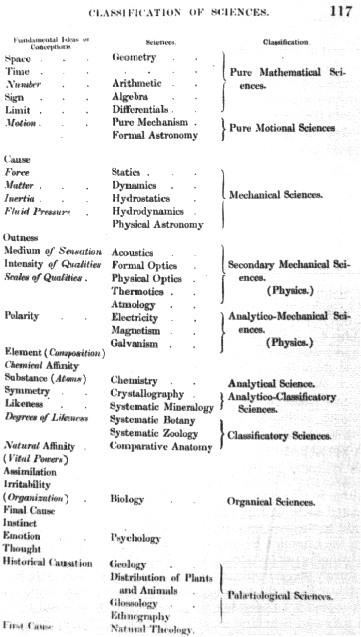The prototype of fashion for men in the early Regency period (1797 to 1810) is one Beau Brummel. In the image at left (Jessamyn's Regency Costume Companion), Brummel wears the standard tailcoat cut without a waist seam (all Victorian coats had waist seams), and you can see approximately two inches of his cream-colored waistcoat beneath. The U-shaped way the tailcoat was cut gave the hips their distinctive shape, and also created some bunching in the coat itself, which you can see if you look closely. The sleeves, as you can see, are extraordinarily long. Modern men's shirts and jackets are worn with the cuffs touching the wrist, but these cuffs hang about half-way down the hand. The coat itself would've been made from wool, fancy bengaline, or serge, and it was only the dark blue jackets that had gold buttons. Every other color of tailcoat had buttons the same color as the fabric. Note also the M-shaped lapels of the jacket.
The waistcoat Brummel wears here extends over the pants and slightly below the edge of the tailcoat. Gentlemen's waistcoats in this period would be made of wool, linen, or silk; with a single row of buttons and sometimes sharp collars. More often than not, the waistcoat would be of a brocade or similar pattern, even though solid-colored ones did exist.
A gentleman's shirt, however, would not have a long line of buttons. Rather, there would be a single button near the collar of the shirt, and a ruffle to cover the button when it was worn. A gentleman slipped his shirt on over his head, rather than buttoning it up in the Regency period. Shirts were made from linen or cotton.
To a proper gentleman, according to Brummel, the cravat was one of the most important parts of the outfit. There were easily a dozen different ways to tie a cravat, some very outlandish indeed. The work Neckclothitania (1818) described 14 distinct ways of tying a cravat, with the specific amount of starch, type of material, and color of cloth that should be worn with each. One of these tying styles was the Oriental, which was tied thus: "The Oriental made with a very stiff and rigid cloth, so that there cannot be the least danger of its yielding or bending to the exertions and sudden twists of the head and neck. -Care should be taken that not a single indenture or crease should be visible in this tie; it must present a round, smooth, and even surface - the least deviation from this rule, will prevent its being so named. This neck-cloth ought not to be attempted, unless full confidence and reliance can be placed in its stiffness.-it must not be made with coloured neck-cloths, but of the most brilliant white. It is this particular tie which is alluded to in the following lines. 'There, had ye marked their neck-cloth's slivery glow, Transcend the Cygnet's towering crest of snow.'" (The Regency Collection).
The breeches, worn here tucked into knee-high boots, were either buckskin or nankeen (a fabric originally acquired from Nanking, China). Buckskin was definitely the more common of the two, and nankeen was generally only used for summer wear. The front of the breeches were actually a flap of fabric affixed with buttons. You can see the edge of the flap beneath the curve in the jacket if you look closely; this is in stark contrast to the fly front of today. Breeches were generally light-colored, in contrast to the darker tailcoat, and didn't become fashionable for evening wear until later in the century.
Pants would come more into vogue as the century wore on, and between 1810 and 1825 really came more into prominence, as the image at right (again from Jessamyn) of Lord Grantham shows. How can you tell that Grantham is wearing pants? Look at the height of his boots. They're mid-calf length here, as opposed to Brummel's knee-high boots. If Grantham were wearing breeches, we would be able to see the ends of the legs with boots that low.
A word about boots as well -- good leather boots were essential for the gentleman of the Regency period, even when they went into town on business. According to Jessamyn, this reliance on boots as part of proper attire is the key thing that shows the roots of Regency fashion in the riding dress of the previous century.
Lastly, there's the accessories. Leather gloves, a top hat, and a cane were the proper accessories that no gentleman would be seen around town without. An aside: you might not see it in Grantham's picture, but by the time the 1820s rolled around, the common U-shape cut on the tailcoat had more or less been replaced by a straighter cut across the torso.
One very interesting note is that no Regency gentleman of any social standing would be seen without his coat on. There's an image of Hugh Grant lounging backstage at the filming of a movie version of Sense & Sensibility with his tailcoat off. It's useful so one can get a good look at the shirt sleeves common to the Regency period, but it's something that would never ever have happened during the actual Regency period. It would be a scandal if a gentleman was seen without his tailcoat on.
Now, I can kind of tell what you're thinking. What does talking about Men's clothes in the Regency period have to with Steampunk, seeing as Steampunk is a Victorian aesthetic and not a Regency one? Well, many of today's most formal apparel still has its roots in Regency fashion, and if you have an older man in a Steampunk alternate-history story set in 1865 in England (for example), then that gentleman would probably still wear Regency-style clothing. We see even today that older generations hold on to the clothes that were fashionable when they were young. A Victorian gentleman who came of age during the Regency period might do the same.







